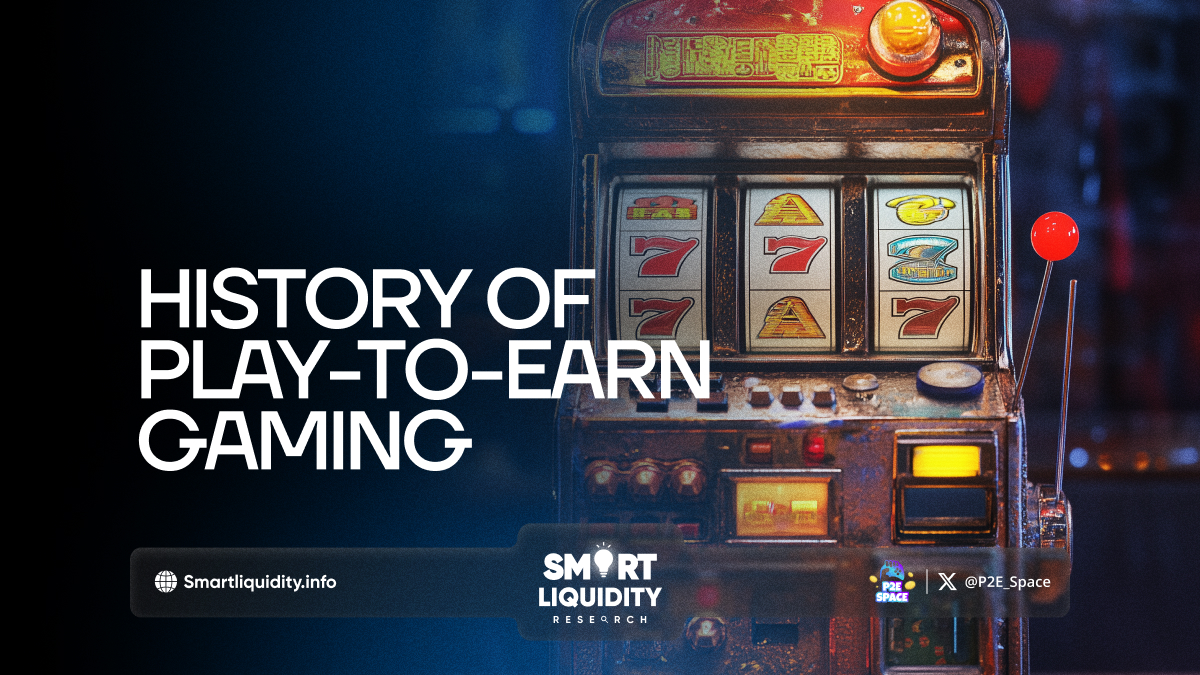The History of Play-to-Earn Gaming


The concept of earning while playing games was once a distant dream, relegated to niche discussions in tech circles and fantasy forums. Yet, today, Play-to-Earn (P2E) gaming has evolved from a mere idea into a thriving, innovative segment of the gaming industry. From its humble beginnings to its explosive rise, the story of Play-to-Earn is one of technological innovation, shifting economies, and a redefining of what gaming can truly offer.
The Early Days: When Gaming Met Blockchain
The genesis of P2E can be traced back to the inception of blockchain technology in the late 2000s. While early adopters focused on cryptocurrencies like Bitcoin, visionary developers saw potential beyond digital currency. By integrating gaming with blockchain, they sought to create systems where players could own, trade, and profit from digital assets within games. This laid the groundwork for the birth of P2E.
In 2017, the phenomenon took its first major step with the launch of CryptoKitties, a blockchain-based game where players could breed, buy, and sell virtual cats. While it seemed trivial to outsiders, it was revolutionary. For the first time, players owned their in-game assets with proof of authenticity and scarcity, thanks to the underlying Ethereum blockchain. This marked the dawn of the Non-Fungible Token (NFT) era, which would soon become central to Play-to-Earn mechanics.
The Rise of P2E: The Axie Infinity Revolution
Fast forward to 2020, and the world was still grappling with the COVID-19 pandemic. Traditional employment was disrupted, and people began looking for alternative ways to earn a living. Enter Axie Infinity—a game that turned P2E into a global phenomenon. Players could earn in-game tokens, which could be converted into real-world money, by battling, breeding, and trading cartoonish creatures known as Axies.
Axie Infinity didn’t just provide entertainment—it offered a lifeline to many, especially in countries like the Philippines, where entire communities began making a living solely by playing the game. The financial potential of P2E became impossible to ignore. The game’s economy ran on its own cryptocurrency, allowing players to cash out their earnings and blurring the lines between gaming and work. Axie’s success catapulted the Play-to-Earn model into mainstream consciousness, inspiring a wave of similar games.
NFTs and the New Gaming Economy
As P2E gained momentum, NFTs became the building blocks of its economy. Unlike traditional games where assets like skins, weapons, or characters are confined to one game and owned by the developer, P2E games made these items tangible, tradeable assets on the blockchain. This paradigm shift empowered players, giving them true ownership of digital goods.
Games like The Sandbox and Decentraland pushed the envelope further by creating entire virtual worlds where players could buy land, build structures, and even create their own mini-games—all monetizable through NFTs. The era of “digital real estate” began, and suddenly, the value of a plot in a virtual world could rival real-world property prices.
Challenges and Criticisms
Despite its meteoric rise, P2E hasn’t been without challenges. Critics argue that some Play-to-Earn games resemble speculative investments more than true games, raising concerns of unsustainability. Moreover, the high initial cost to join some games, like Axie Infinity, has been a barrier for new players. This has given rise to “scholarship” programs where wealthier players lend assets to newcomers in exchange for a cut of their earnings—a model that echoes traditional employer-employee dynamics.
Additionally, the volatility of cryptocurrency markets can make earnings unpredictable. Regulatory concerns and the need for a balance between fun and finance also pose hurdles that the industry is still grappling with.
The Future: Mainstream Adoption or Passing Trend?
Looking ahead, the future of Play-to-Earn is bright yet uncertain. Major gaming companies like Ubisoft and EA are exploring blockchain integrations, and new projects are popping up regularly, each promising to redefine the genre. The rise of “Free-to-Play-to-Earn” hybrids is also likely, allowing players to enter without financial barriers but still earn rewards.
But for P2E to endure, it needs to focus on creating games that are fun first and foremost, with earning potential as a secondary feature. The challenge is to build economies that are engaging, sustainable, and fair. If done right, Play-to-Earn could transform not just gaming, but the entire digital economy—where work, play, and value creation are all intertwined.
Conclusion
The history of Play-to-Earn gaming is still being written. What began as a fringe idea has now redefined what games can be. It’s not just about playing for fun anymore—it’s about creating value, ownership, and new economic opportunities for players around the world. As blockchain technology continues to evolve, so too will the Play-to-Earn landscape, unlocking new ways for players to engage, earn, and connect.




